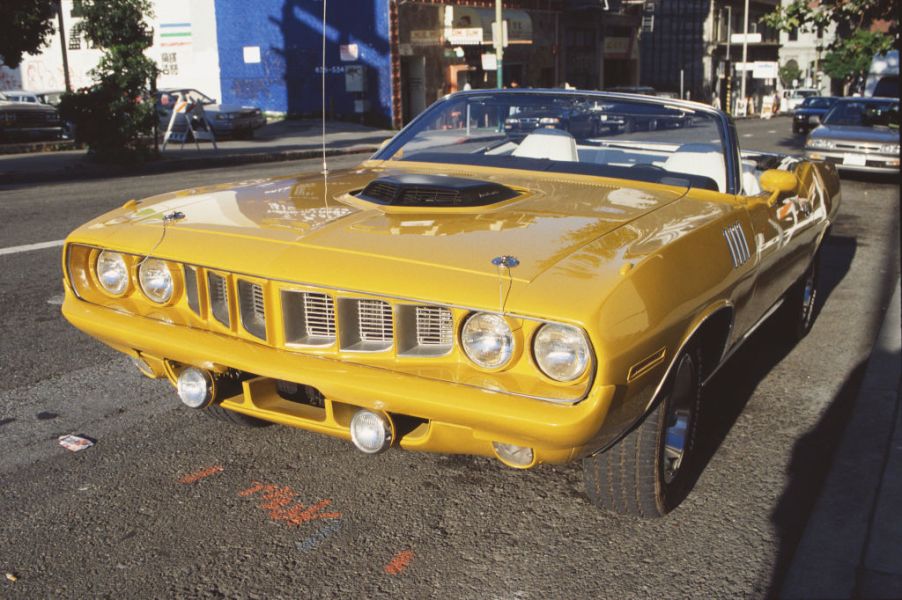
The History of Kevin Hart’s Plymouth Barracuda
With the recent crash involving actor Kevin Hart and the subsequent lawsuits claimed to be in the offing by passengers and Hart himself, the car at the center stage is a Plymouth Barracuda. A car that hasn’t been manufactured in over 40 years by a company no longer exists.
What’s A Plymouth Barracuda?
Modified to the hilt, Hart’s car was a ‘Cuda in sheetmetal only. So what is a Barracuda, anyway?
The Plymouth Barracuda was the first of the sporty cars the segment is usually credited to the Ford Mustang. While the Mustang’s sales make the Barracuda’s look like an accounting adjustment, the ‘Cuda was introduced two weeks before the Mustang making it the first on April 1, 1964.

Based on the popular Plymouth Valiant, a plain vanilla compact sedan sharing Chrysler A-body platform components with sister Dodge Dart. The ‘Cuda incorporated Valiant sheetmetal from the doors forward as well as the same inner unibody structure and engine choices. What made Barracuda unique was the bulbous fastback rear with its huge and heavy wrapping rear glass that was the largest chunk ever used to that point.
Barracuda Lasted From 1964 to 1974
The Barracuda lasted for three iterations, from 1964 through the muscle car era to 1974, then disappeared forever. In that short decade-plus it more than held its own against the Mustang and Camaro competition, if not in numbers produced in reputation. There was nothing that compared to a “Hemi ‘Cuda” in terms of sheer brutal power combined with a medium-sized coupe.
With parent company Chrysler Corporation never having the same budget to market and promote the ‘Cuda like crosstown rivals Ford and Chevy, it nonetheless maintains status equal to its competition in enthusiasts’ eyes.
First-Gen Plymouth ‘Cuda

The first-gen lasted three years with a mild facelift in 1966. Engine choices remained Chrysler small-blocks but slowly increased in horsepower as the muscle car wars ramped up. A “Formula S” option featured the most powerful version of the 273 ci V8 with a slew of standard options and slightly upgraded suspension.
While the first Barracuda was short on racing participation, it is fondly remembered as one of the first exhibition wheelstanders in drag racing.
The “Hurst Hemi Under Glass” was a 1965 ‘Cuda used for exhibition runs doing wheelies down the entire quarter-mile strip.

A much improved 1967 Barracuda debuted in coupe, fastback, and convertible versions. By the end of this version’s run in 1969 one could get everything from a straight-six cylinder engine all the way up to a 426 ci Hemi V8–the full gamut of engine choices available in the era.
Road racing pursuits were light, but in drag racing the Barracuda was fielded by a number of popular Pro Stock racing teams. Fiberglass replica bodies were also quite common in the nitro Funny Car class of NHRA drag racing.

The 1970-74 Barracuda was, along with sister Dodge Challenger, was now built around the new E-body platform. Now available as a coupe or convertible it was a clean, muscular body with options galore. More aggressively marketed to enthusiasts as it capitalized on its drag racing victories it saw sales match the previous year’s production, but dropped drastically from 1971 onward as insurance premiums combined with environmental regulations becoming stricter signaled the end of these high-performance machines.

The burgeoning Trans Am road racing series ramped up in both popularity and participation, with Plymouth providing two competitive ‘Cuda teams that mixed it up all year in 1970 but was denied any victories. In drag racing, the team of Sox and Martin and other privateers kept the Barracuda in high profile the next few years.
Muscle Car Holy Grail
Today, a convertible combined with a Hemi engine and four-speed manual transmission is the Holy Grail of muscle car collecting. The few that remain have seen prices top $1 million, beating pretty much every other American offering today.
The Kevin Hart Barracuda is a 1970 coupe that shared nothing with its production counterpart but its sheetmetal. The combination of a modified late-model Dodge drivetrain and inherent short wheelbase makes it a lethal combo in the hands of someone not treating it with the utmost respect.
We may never know what circumstances transpired before tragedy struck Hart and his friends in the ‘Cuda, but the basis for the car they were in has a rich history, strong enthusiast following, and reputation that will always overshadow the negative effects of a single terrible crash.



